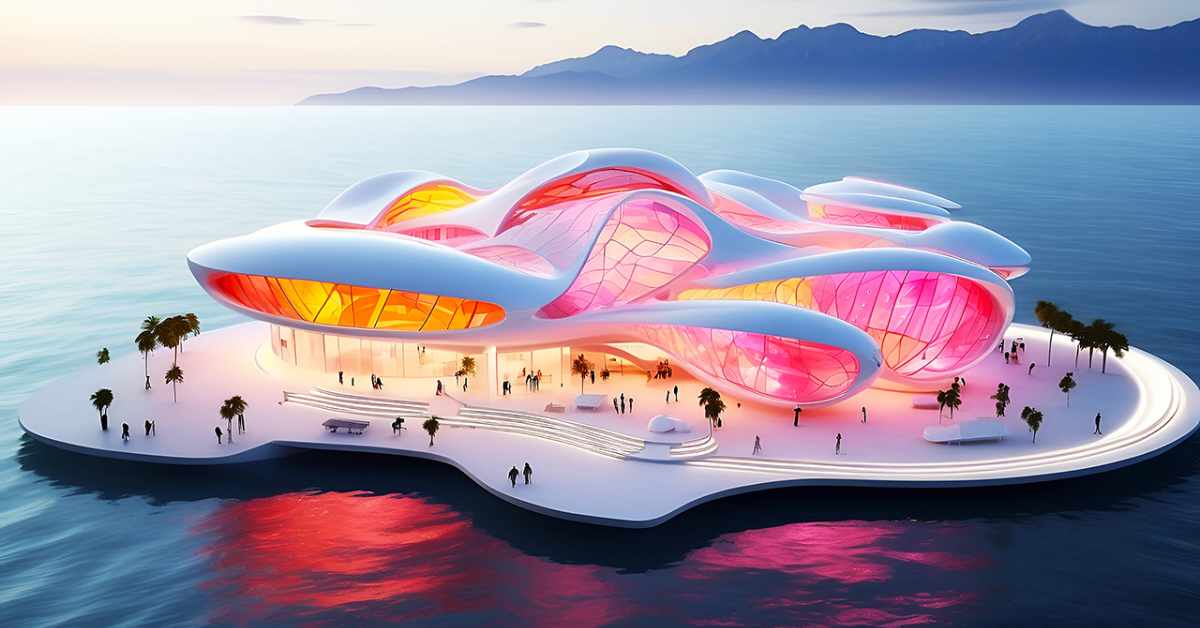Art on Water: Exploring the Floating Glass Museum and Its Impact on Art and Environment
I recently stumbled upon an exciting new art museum concept known as the Floating Glass Museum, designed by the innovative team at Luca Curci Architects. It sparked some thoughts, particularly about a project I’m diving into. This project revolves around glass-like images, and even though it’s in the early stages, the interplay of light and the depth of details are already showcasing glass-like properties beautifully. I’m thrilled about the journey ahead with this project.
This concept also brought back memories of an event in Victoria, BC, named Sculpture Splash. It was an enchanting art event held for a few summers, right by the sea in a quaint park. The park transformed into an outdoor art gallery, showcasing the talents of local sculptors in various mediums. From imposing recycled metal sculptures to intricate carved wood pieces, the display under the summer sun was a feast for the eyes.
Looks like Sculpture Splash is back after a three year break! It’s in a different venue now but every bit as beautiful.

Contemporary Art Meets Sustainable Design to Combat Climate Change

The Floating Glass Museum is a visionary project by Luca Curci Architects that merges art with the natural world, turning water into a canvas for contemporary expression. Developed in collaboration with Giulia Tassi Design and an international team, including architects, designers, and with the help of artificial intelligence, this project is a nod to Venice’s rich cultural heritage and the ancient art of glassmaking. It stands at the intersection of tradition and innovation, utilizing advanced design and a commitment to sustainability to create a space where the history of glass and modern experimentation meet.
As a beacon of environmental awareness, the Floating Glass Museum is a unique space where art, nature, and tradition blend seamlessly. It’s a testament to the power of contemporary art and sustainable design working together to encourage reflection, discovery, and contemplation. The museum plans to make its mark in cities around the world affected by climate change, including Dubai, New York, Hong Kong, Singapore, and Busan.
For more details, check out www.lucacurci.com.
Sea levels and Climate Change
Climate change is a global challenge that’s impacting every country across all continents. It’s shaking up our economies, communities, and daily lives, with even bigger impacts on the horizon. We’re seeing shifts in weather patterns, rising sea levels, more intense weather events, and record-high greenhouse gas emissions.
Looking ahead, scientists predict that by 2100, sea levels could rise by at least a foot (about 0.3 meters). But if we keep up our current rate of carbon emissions, that increase could surge to as much as 8 feet (around 2.4 meters). Source: NASA – The Effects of Climate Change. That’s a future we can—and should—work to avoid.
Bringing Art and Nature Together
The Floating Glass Museum truly captures the essence of merging art with the natural environment, not just for its environmental impact but also for the sheer beauty of experiencing art in such settings. And there’s something magical about art by the sea. This post is completely unsponsored. I simply thought this was interesting and felt compelled to share this fascinating concept with you. I’m eager to hear your thoughts on it. What do you think? Share your views in the comments below!






0 Comments